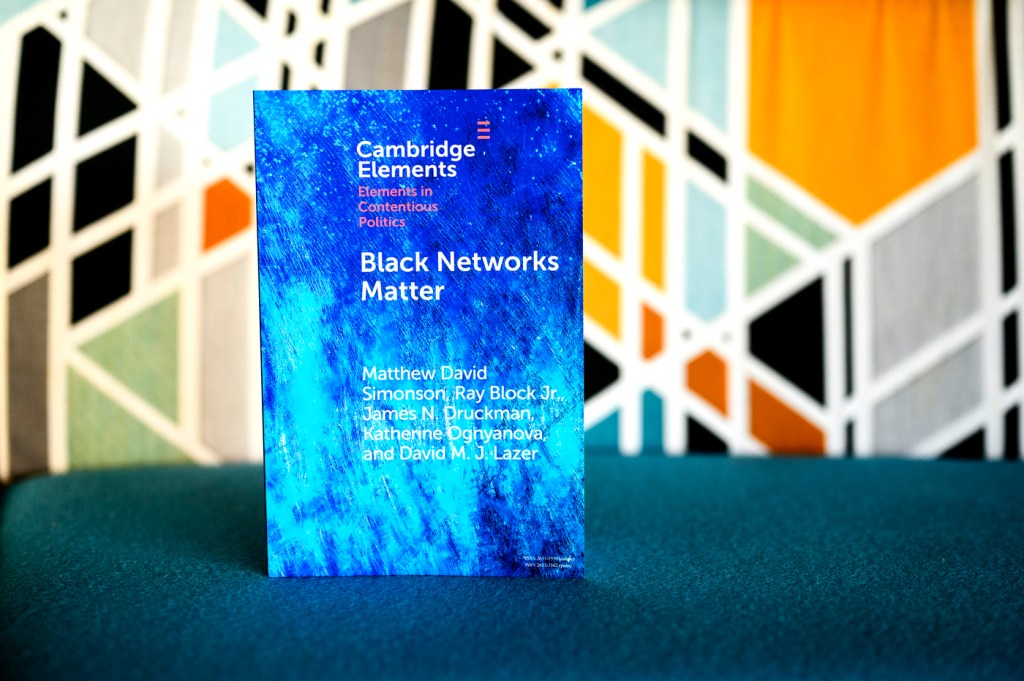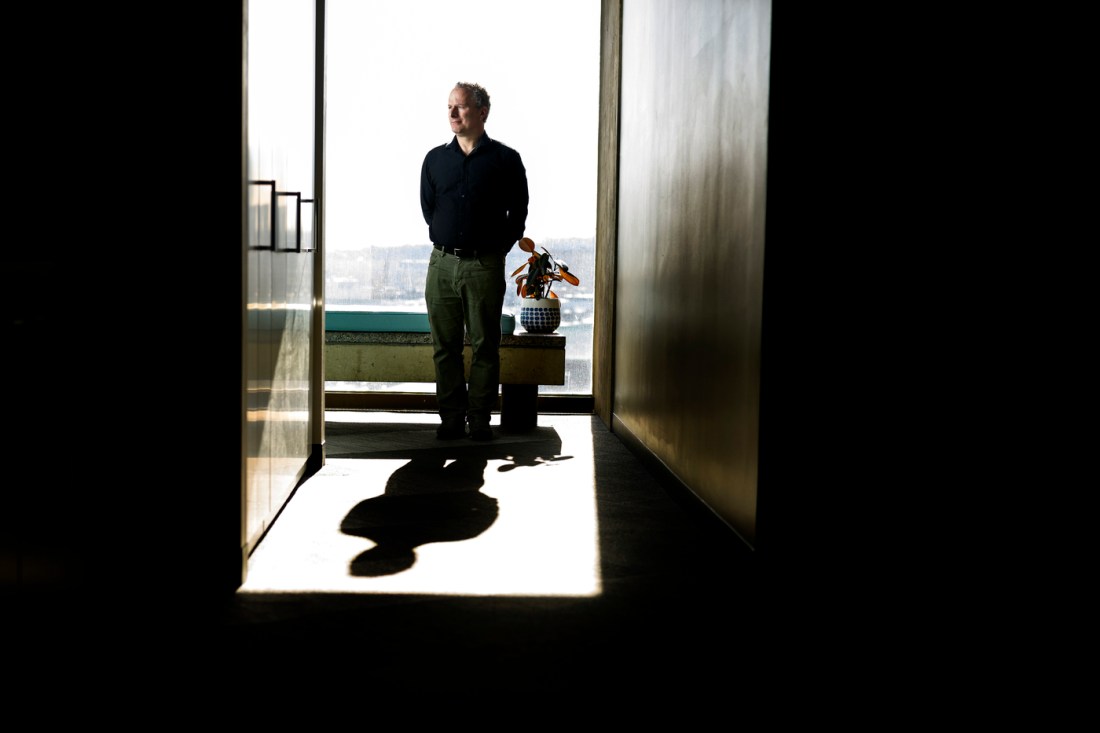New book describes how Black Americans used the power of networks and allies to organize largest protests in nation’s history

In May 2020, the video of George Floyd’s death at the hands of a Minneapolis police officer sparked an uptick in protests by the Black Lives Matter movement.
What turned the rallies into what is believed to be the largest mass mobilization in the nation’s history later that summer was the way Black Americans reached out on social media to share their stories of encounters with racism, Northeastern University researchers say.
“Black Networks Matter,” a new book co-authored by Northeastern professor David Lazer, describes how a social justice movement used the power of relatively new technology and networks to motivate more than 10 million people to rally and demand justice for Black victims of racism and police killings.
“The scale (of the protests) clearly has a lot to do with social media and the role that social media played in mobilizing people,” says Lazer, whose research relies on survey data from 5,000 protesters as well as 100,000 non-protesters.
Most of the protesters were not Black, a unique development in civil rights demonstrations, says Lazer, an expert in network science and university distinguished professor of political science and computer sciences.
“We found that interracial ties between Blacks and non-Blacks were really crucial in mobilizing non-Black participation,” he says. “The diversity of the protestors is in part driven by those cross racial ties.
That was especially true for people who had never attended a protest against racism or police violence, Lazer says. They “were really being motivated by these interpersonal ties.”
The ties ranged from having a friend, neighbor, relative or co-worker who is Black to hearing about racism from postings on TikTok, Instagram and Reddit, he says.

“The book makes the case that although the protests were majority non-Black (participants), which is a big historic change for movements on behalf of minorities, the Black people who did attend were instrumental in turning out their non-Black allies,” says co-author Matthew Simonson, a professor at Hebrew University who received his Ph.D from Northeastern in 2021.
“What’s so remarkable is that you had millions of people protest not on behalf of themselves and their own economic hardships and their own injustices, but on behalf of another group,” says Simonson,who worked on the book in conjunction with his network science dissertation.
The data came from the COVID States Project, which Lazer co-directed, a massive online survey conducted across the nation during and after the pandemic.
The survey found that 52% of protesters identified as white, with Black people making up 20% of protesters, which is one and a half times their share of the population.
Featured Posts
Protesters included millions of Republicans, who represented 19% of the participants, including Trump supporters and conservatives, according to Black Networks Matter, which is available free online.
The research says the participants in the summer 2020 protests were “far more racially diverse than the 1960s civil rights movement.”
The civil rights movement involved far more formal organizing, says Simonson, who adds that its legacy of integration “helped lay the bedrock” for the Black Lives Matter protests.
“One of our most interesting findings is that white people who live in a ZIP code with very few Black people were less likely to go to a protest than white people who live in a ZIP code with more Black people,” Simonson says.
“There are still major problems with de facto segregation today, but certainly a lot of communities are now integrated as a result of changes in housing laws that are a legacy of the civil rights movement. So as a result of that integration, we see that white people with Black neighbors are more likely to come out to the protests,” he says.
The data also showed that Black people sharing stories about being a victim of racism or police violence “seems to have been a big factor in making non-Black people aware of the issue and motivating them to turn out to protest,” Simonson says.
Lazer says there’s an emerging vein of research on how perspective of other people’s life experience can be a powerful motivating factor for changing behaviors and attitudes.
The researchers say that boredom with the COVID lockdown likely played into some people’s decision to attend the protests, but fear of infection deterred others.
Studies show that between 4.5 to 6% of the American population attended a Black Lives Matter protest rally, a statistic Black Networks Matter calls “unprecedented.”
Platforms such as TikTok, Twitter and Reddit have their faults, Lazer says. But “it turns out that these are very effective tools for (organizing) social movements. The decline of Twitter and the recent decisions by Facebook and Instagram to demote political content might well undercut the emergence of any protest movements today.”
The other co-authors of “Black Networks Matter” are Ray Block Jr. of Pennsylvania State University; James N. Druckman of the University of Rochester; and Katherine Ognyanova of Rutgers University.










